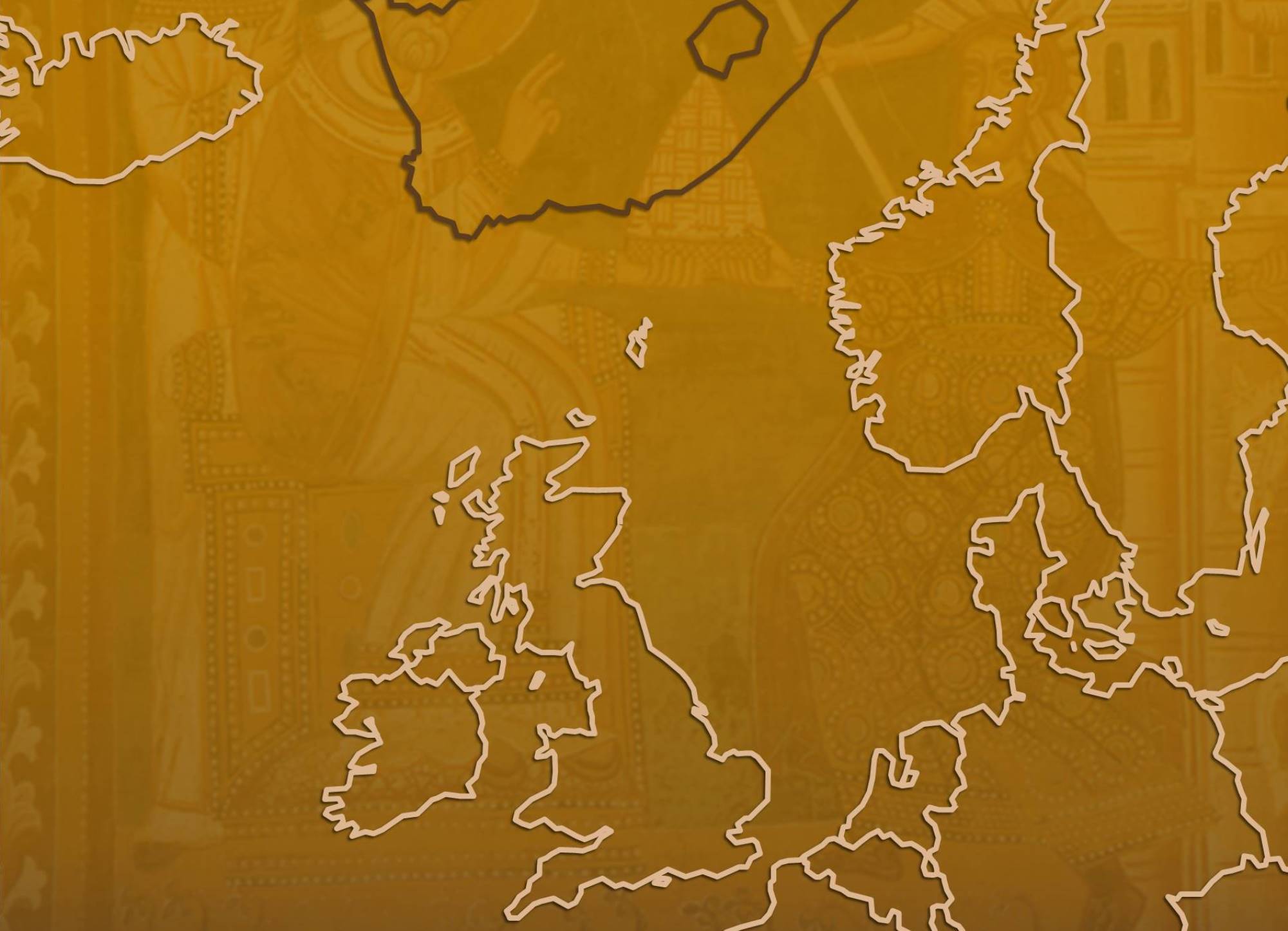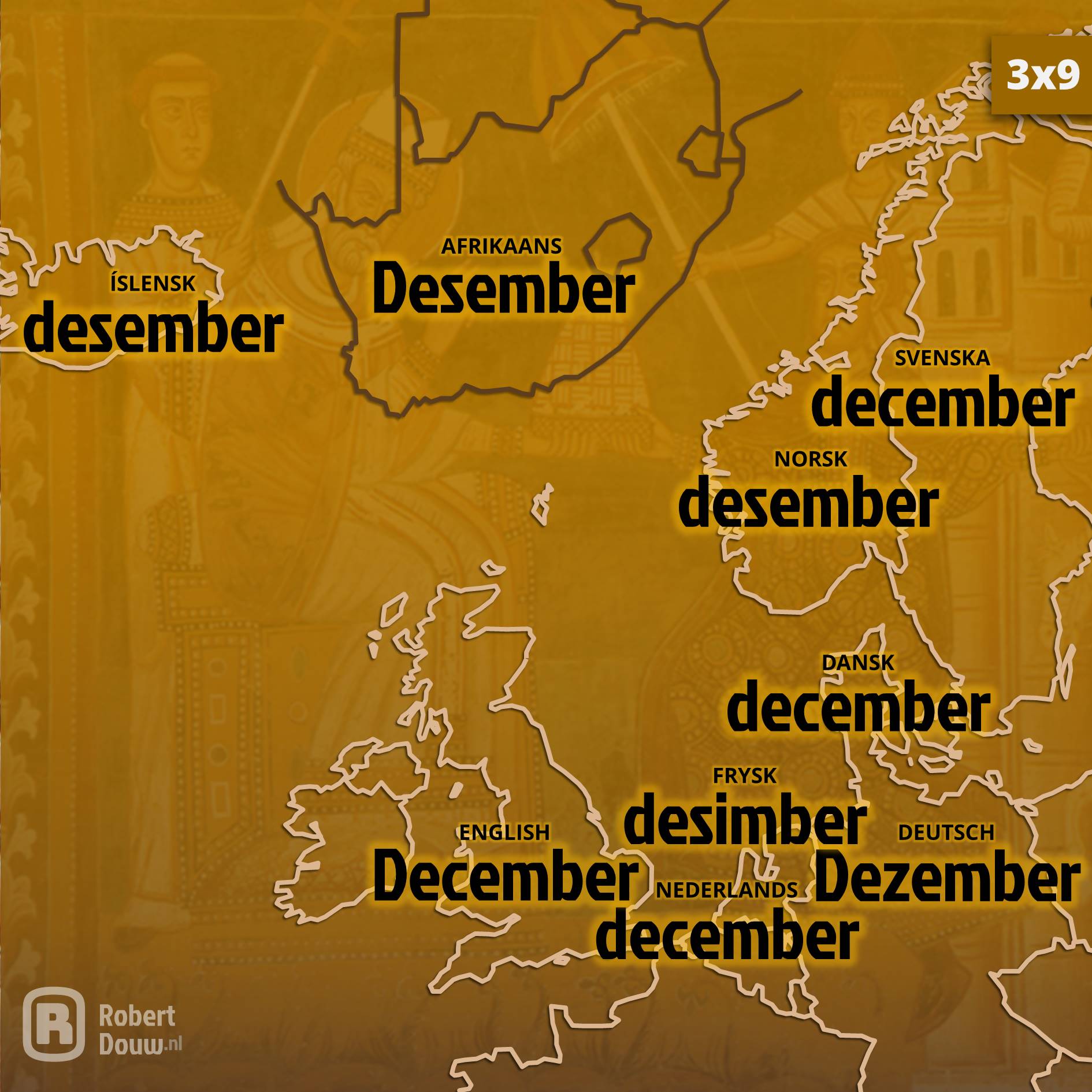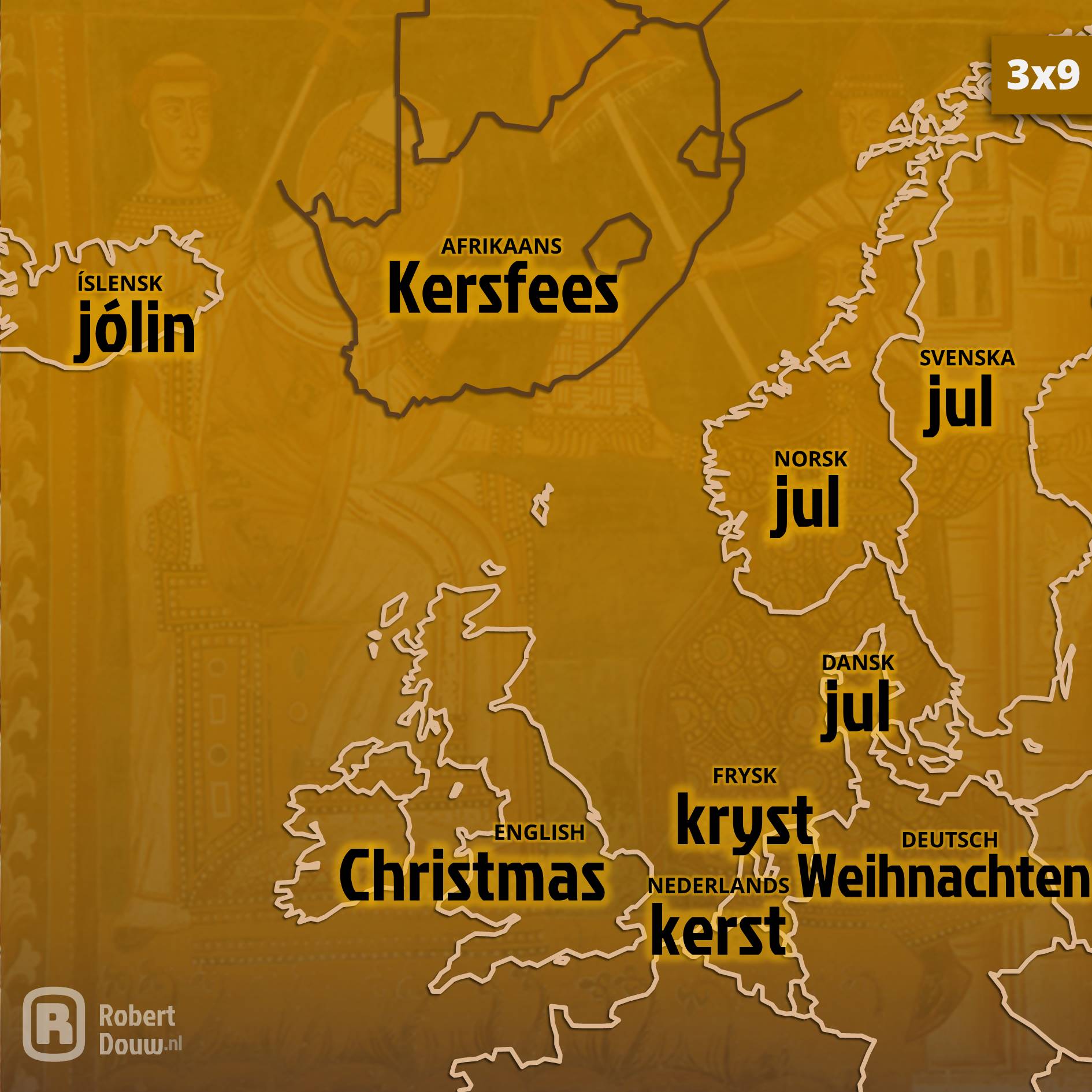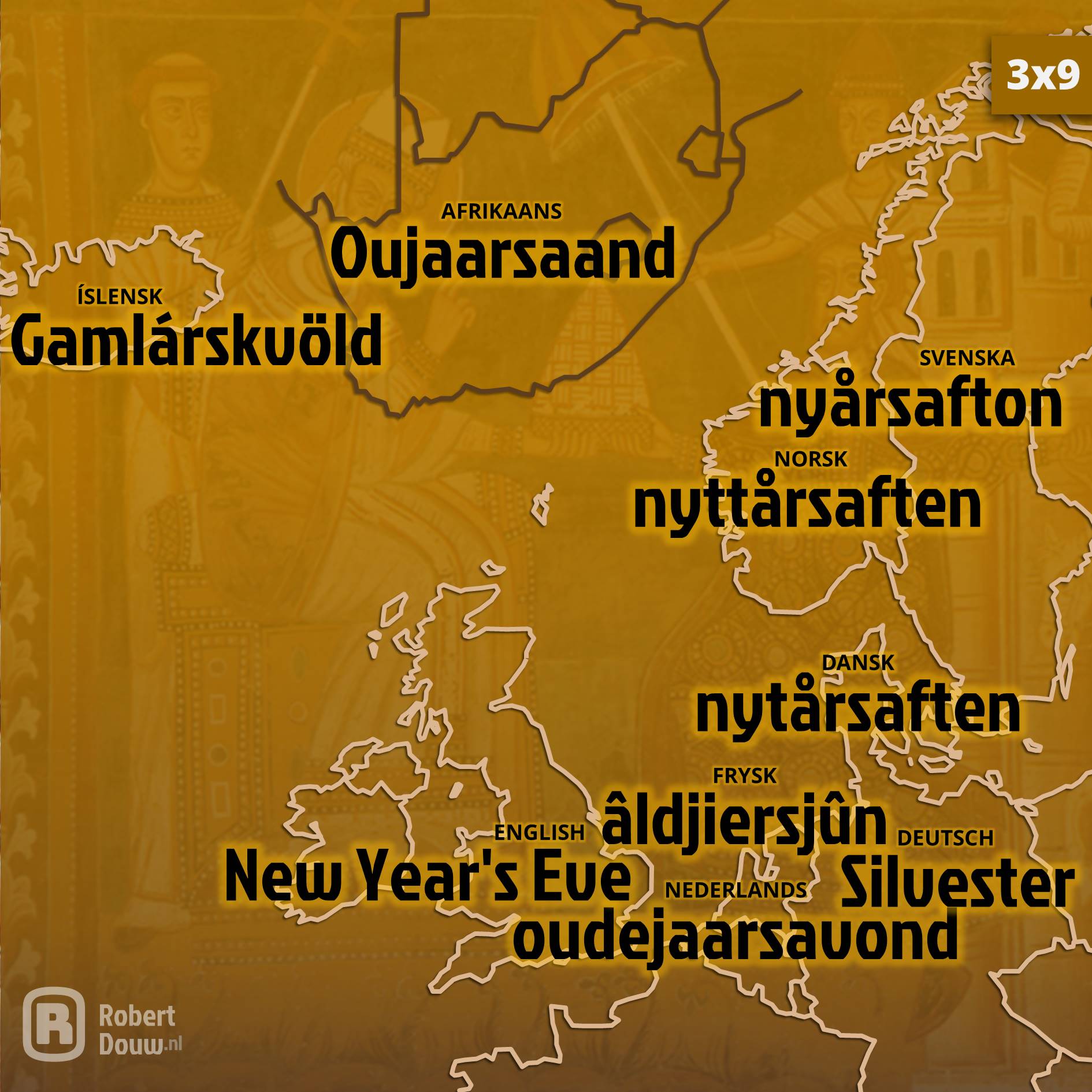THREE TIMES NINE
December, Christmas, New Year's Eve
Linguistics
| 27-12-2021
About the month of December – the tenth month with the Romans; hence decem – there is a lot to tell, but the first thought that will come to most people's mind is that it is the month of Christmas. In the Scandinavian countries and Iceland, the festival still bears the pre-Christian name of the Midwinter Festival. German ("the sacred night") and the other West Germanic languages (all directly derived from the title christos) have clearly given the festivities a post-Christian name.
Yet the painting in the background of the images is not a Christmas scene. One of the men in that medieval artwork is Sylvester, also known as Pope Sylvester I and as Saint Sylvester, who died on December 31, 335. Therefore, according to the Roman Catholic Church's calendar of saints, the last day of the year is the commemoration day for Pope Saint Sylvester I, and New Year's Eve is called Silvester in German. Some other languages, including Dutch, also use his name as an alternative name for New Year's Eve.
Finally, I think it's striking that Icelandic (Gamlárskvöld = "old year's evening"), Frisian, Dutch and Afrikaans depart from the old year, while English, Danish, Norwegian and Swedish already focus on the new year on December 31. Would that say something about the national character?
Yet the painting in the background of the images is not a Christmas scene. One of the men in that medieval artwork is Sylvester, also known as Pope Sylvester I and as Saint Sylvester, who died on December 31, 335. Therefore, according to the Roman Catholic Church's calendar of saints, the last day of the year is the commemoration day for Pope Saint Sylvester I, and New Year's Eve is called Silvester in German. Some other languages, including Dutch, also use his name as an alternative name for New Year's Eve.
Finally, I think it's striking that Icelandic (Gamlárskvöld = "old year's evening"), Frisian, Dutch and Afrikaans depart from the old year, while English, Danish, Norwegian and Swedish already focus on the new year on December 31. Would that say something about the national character?

THREE TIMES NINE
November, slaughter, mist
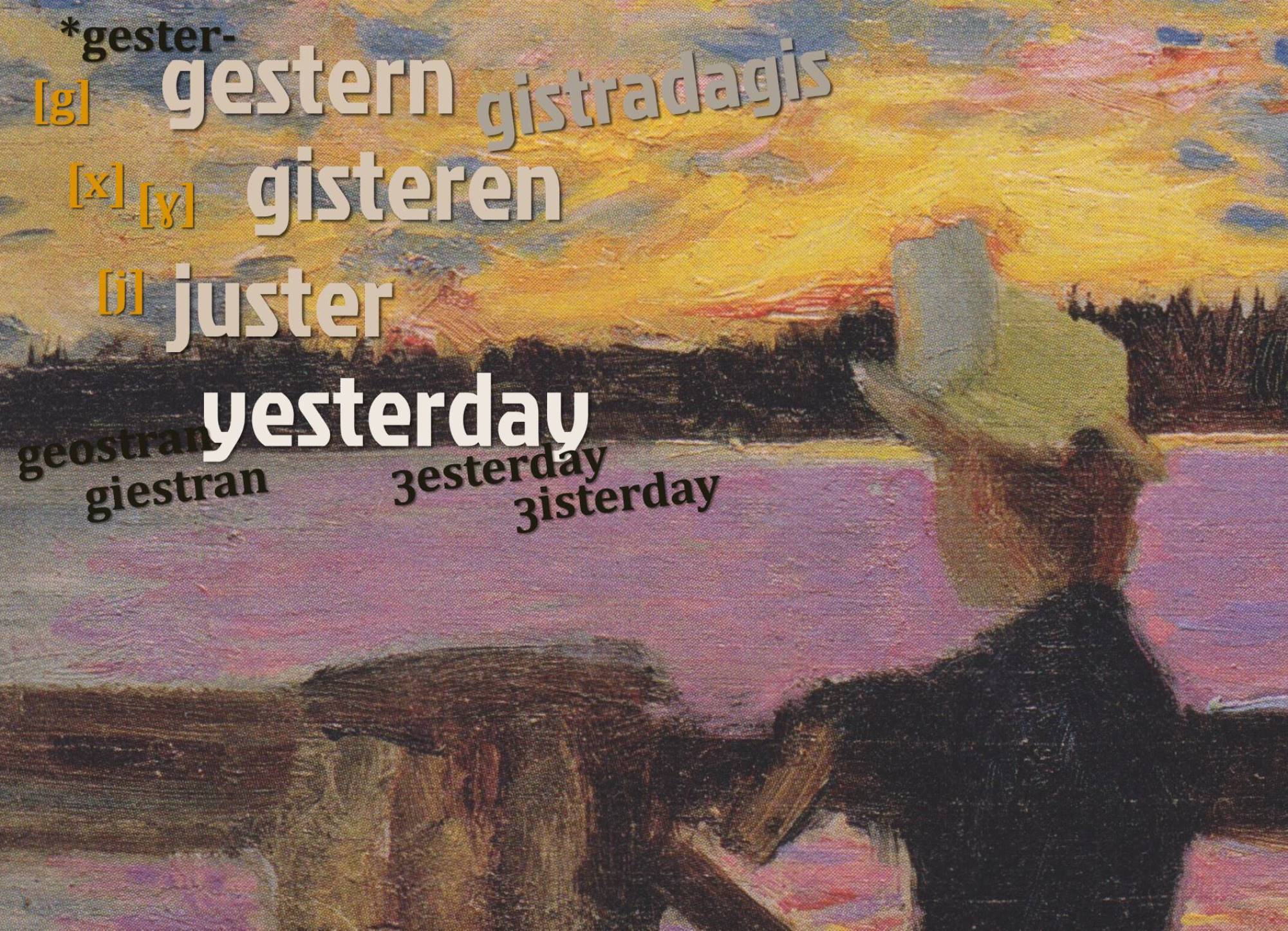
WEST GERMANIC
Yesterday
LINGUISTICS
Click here for an overview of everything in the Linguistics section.
